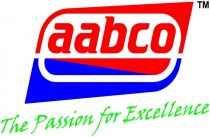Technology Advancements in Metals Enhancing Energy Generation, 2019 Report - ResearchAndMarkets.com
The "Technology Advancements in Metals Enhancing Energy Generation" report has been added to ResearchAndMarkets.com's offering.
This research service focuses on the innovations in steel and non-steel materials with a focus on some specific energy sectors such as LNG, geothermal, nuclear, coal thermal and biomass.
Steel, an alloy of two metals - iron and carbon - is extensively used in the energy industry. Steel meets many demanding applications in the energy sector as well, supplying the industry with high-performance steel for various applications. In power generation and distribution, steel is used in transformers, generators and electric motors. In nuclear and coal power generation, it is used in heat exchangers and turbines.
Key Topics Covered:
1. Executive Summary
1.1 Research Scope
1.2 Research Methodology
1.3 Research Methodology Explained
1.4 Key Findings
2. Introduction
2.1 Decarbonization of the Global Energy Industry Increases Demand for Metals
2.2 Use of Steel in Specific Energy Sectors
3. Innovation Profiles: LNG
3.1 Steel that Offers Superior Properties at Lower Temperatures Sought After for LNG Storage
3.2 High Manganese Steel Capable of Lower Operating Temperatures
3.3 Corrosion Resistant Stainless Steel with High Chromium and Nitrogen Content for LNG Storage
4. Innovation Profiles: Geothermal
4.1 Anti-corrosive Steel Properties Desired in Geothermal Sector
4.2 Corrosion-resistant Coatings for High-Temperature Geothermal Applications
4.3 Corrosion-resistant Steel for Gas Abatement System
4.4 New Additive Manufacturing Technique Creates Steel with Better Properties than Conventional Steel
5. Innovation Profiles: Nuclear
5.1 Austenitic Steel Alloys with Better Creep Strength and Oxidation Resistance for Nuclear Reactors
5.2 Novel Testing Procedure for Analyzing the Mechanical Properties of New Alloys
5.3 Annealing Solution to Improve the Operational Lifetime of Nuclear Reactors
6. Innovation Profiles: Coal Thermal
6.1 Overview of Industry Needs: Coal Thermal
6.2 High Chromium and Nickel-Based Alloys for Better Oxidation Resistance
6.3 Oxidation Resistant Steel For High-Temperature Steam Applications
6.4 Austenitic Stainless Steel for Advanced Coal-fired Power Plants
7. Innovation Profiles: Biomass
7.1 Overview of Industry Needs: Steel for Biomass-Based Power Generation
7.2 Improved Corrosion Rates with Adjustment of Alkali Mixtures
7.3 Corrosion-resistant Coatings for Biomass-Based Boilers
7.4 Glass Lined Steel for Biogas production and Biomass Digesters
8. Innovation Profiles: Non-Steel Alloys
8.1 High Entropy Alloys Withstand High Temperatures in Nuclear Reactors
8.2 Ni-based Superalloy for Advanced Ultra-supercritical Power Plants
9. Analyst Perspectives
9.1 Better Storage to Improve Effective Transportation and Storage of LNG
9.2 Advanced Manufacturing Presents Geothermal sector with New Possibilities
9.3 Nickel and Chromium-based Alloys Present High Oxidation and Creep Resistance at the Expense of Cost Effectiveness and Mechanical Strength Respectively
9.4 Variation in Temperature and Load Can Have Impact on the Corrosion Profile
10. Key Industry Contacts
For more information about this report visit https://www.researchandmarkets.com/r/ldy3md
View source version on businesswire.com: https://www.businesswire.com/news/home/20190628005283/en/




